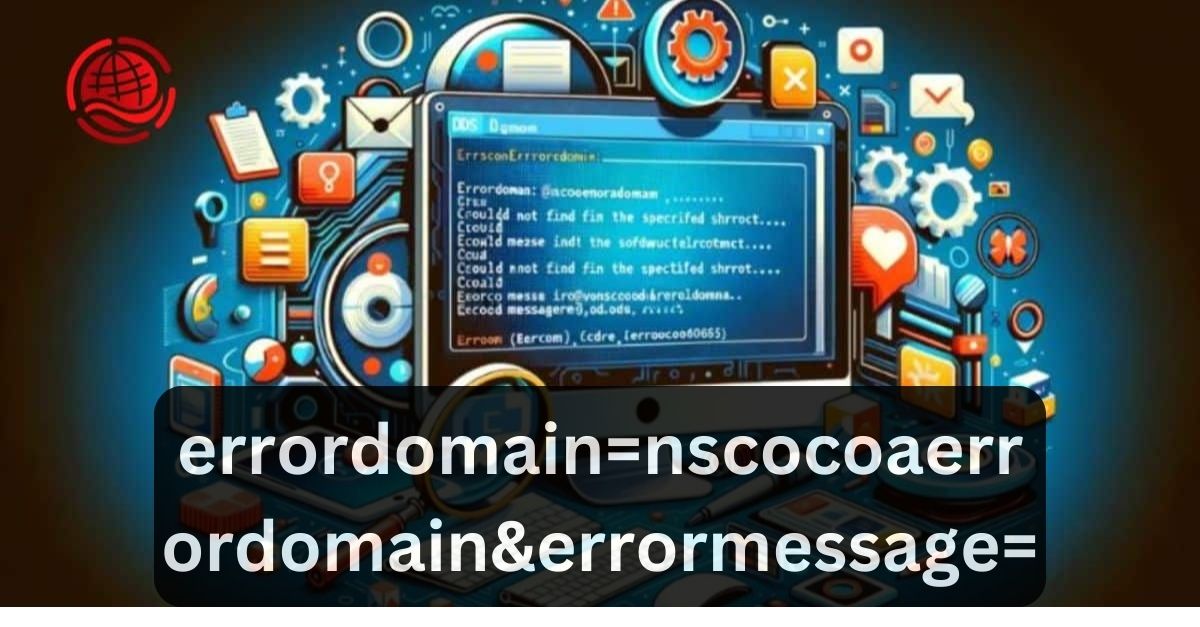In the realm of technology, errors are inevitable companions. These errors often manifest as cryptic codes that can leave users scratching their heads in confusion. One such error, Error Code 4 – “Could Not Find the Specified Shortcut,” is encountered in the NSCocoaErrorDomain, a domain associated with errors related to Cocoa frameworks in macOS and iOS development. In this article, we delve into the nuances of this error, exploring its causes and potential solutions.
Understanding NSCocoaErrorDomain:
Before delving into the specifics of Error Code 4, it’s essential to grasp the concept of NSCocoaErrorDomain. NSCocoaErrorDomain is a domain within the Cocoa framework that encompasses a range of errors related to file operations, memory management, and other core functionalities in macOS and iOS applications. Errors within this domain are typically encountered when dealing with Cocoa APIs and frameworks.
Read i loved you that day huy cuong • afternoon dream • 2021
Deciphering Error Code 4:
Error Code 4, labeled as “Could Not Find the Specified Shortcut,” indicates that the system or application failed to locate a designated shortcut. This error commonly surfaces during file operations or when accessing specific resources within an application. While the error message itself provides some insight, troubleshooting may require a deeper understanding of the underlying causes.
Potential Causes

Several factors can contribute to the emergence of Error Code 4. These may include:
Missing or Corrupted Files:
If the shortcut or associated files are missing or corrupted, the system may fail to locate them, triggering Error Code 4.
Permission Issues:
Insufficient permissions or improper access rights can prevent the system from accessing the specified shortcut, leading to the error.
Pathing Errors:
Incorrect file paths specified for the shortcut can confuse the system, resulting in failure to locate the resource.
Software Bugs:
Occasionally, software bugs within the application or operating system can trigger Error Code 4, especially after updates or changes to the system environment.
Troubleshooting Steps

Resolving Error Code 4 requires a systematic approach. Here are some troubleshooting steps to address the issue:
Check File Integrity:
Verify the integrity of the shortcut and associated files. Ensure they exist in the designated location and are not corrupted.
Review Permissions:
Confirm that the user has appropriate permissions to access the shortcut and related resources. Adjust permissions if necessary to grant adequate access rights.
Validate File Paths:
Double-check the file paths specified for the shortcut. Ensure they are accurate and point to the correct location of the resource.
Update Software:
If the error persists, check for software updates for both the application and the operating system. Installing the latest updates may resolve underlying bugs or compatibility issues.
Consult Documentation:
Refer to the documentation provided by the application or framework encountering the error. Often, developers include troubleshooting tips or known issues that can help resolve the problem.
Understanding Error Code 4 in NSCocoaErrorDomain
This heading focuses on dissecting Error Code 4 within the NSCocoaErrorDomain specifically. It delves into the context of NSCocoaErrorDomain and how Error Code 4 fits into the broader framework of Cocoa errors. By exploring the intricacies of this domain, users gain a deeper understanding of the error and its implications.
Read Discover Lasée: Your Destination for Luxury Living
Common Scenarios Triggering Error Code 4
Here, the discussion revolves around typical scenarios or actions that lead to the occurrence of Error Code 4. By identifying common triggers, users can preemptively mitigate the risk of encountering this error or swiftly address it when it arises.
Impact of Error Code 4 on Application Functionality:

This heading explores the ramifications of Error Code 4 on the functionality of applications. It outlines the potential disruptions or limitations caused by the error and underscores the importance of resolving it promptly to restore normal operations.
Mitigating Error Code 4 Through Preventive Measures
In this section, the focus shifts to proactive measures that users can take to mitigate the occurrence of Error Code 4. By implementing preventive strategies such as regular file maintenance, robust permission management, and adherence to best practices, users can reduce the likelihood of encountering this error.
Advanced Troubleshooting Strategies for Error Code 4
For users grappling with persistent instances of Error Code 4, this heading offers advanced troubleshooting strategies. It delves into more intricate techniques, such as diagnostic tools, log analysis, and collaboration with technical support, to identify and address underlying issues causing the error.
Error Code 4: An Overview of Symptoms and Manifestations
Under this heading, the article delves into the various symptoms and manifestations associated with Error Code 4. It discusses how users might encounter this error, such as through system prompts, application crashes, or failed operations. By understanding the different ways Error Code 4 presents itself, users can more readily identify and address the issue.
Root Causes of Error Code 4: Unveiling the Underlying Culprits

This section explores the underlying causes and triggers behind Error Code 4. It delves into potential root causes such as software conflicts, system misconfigurations, or hardware failures. By identifying the primary factors contributing to the error, users can develop targeted strategies for resolution.
Impact Assessment: Evaluating the Consequences of Error Code 4
Here, the article assesses the broader impact of Error Code 4 on users, applications, and system functionality. It examines how this error can disrupt workflows, compromise data integrity, or impede the performance of affected systems. Understanding the extent of the impact is crucial for prioritizing troubleshooting efforts and mitigating potential risks.
Strategies for Error Code 4 Resolution: A Step-by-Step Guide:
This heading outlines actionable strategies and methodologies for resolving Error Code 4 effectively. It provides users with a systematic approach to troubleshooting, including steps such as error code interpretation, diagnostic testing, and targeted corrective actions. By following a structured resolution process, users can expedite the restoration of normal system functionality.
Best Practices for Error Prevention and Future Preparedness:

In this final section, the article emphasizes proactive measures for error prevention and future preparedness. It discusses best practices such as regular system maintenance, data backups, software updates, and user education. By adopting preventive strategies and cultivating a culture of preparedness, users can minimize the likelihood of encountering Error Code 4 and other similar issues in the future.
Conclusion:
Error Code 4 – “Could Not Find the Specified Shortcut” – can be a perplexing issue for users and developers alike. However, armed with a deeper understanding of its causes and potential solutions, troubleshooting becomes more manageable.
By following systematic troubleshooting steps and leveraging available resources, users can overcome this error and resume their workflow with confidence.
Read Also:




















+ There are no comments
Add yours